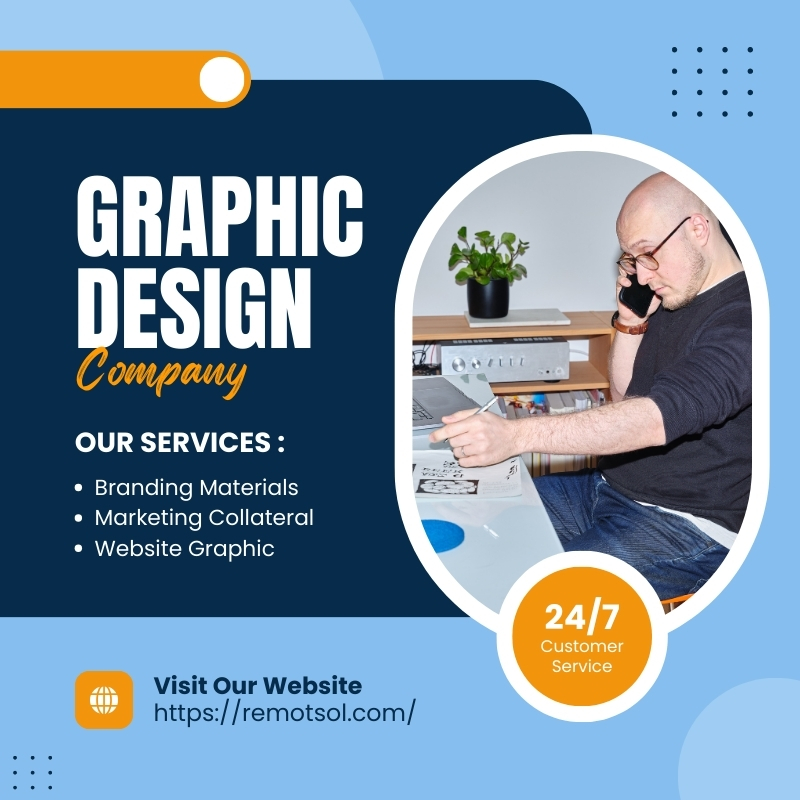
In today’s competitive business world, high-quality graphic design is essential for both print and digital marketing. A well-designed visual not only attracts attention but also builds brand credibility and drives conversions. Whether you’re creating a flyer, social media post, or website banner, investing in professional graphic design ensures that your message is impactful and visually appealing. In this blog post, we will explore the key elements of high-quality graphic design and how it applies to both print and digital marketing.
The Importance of High-Quality Graphic Design
Graphic design is more than just aesthetics; it’s a communication tool that influences consumer perception and decision-making. High-quality designs create an emotional connection with the audience, making it easier to convey messages effectively.
Benefits of Professional Graphic Design:
- Brand Recognition: Consistent and well-designed visuals strengthen brand identity.
- Improved Engagement: Eye-catching graphics increase interaction on digital platforms.
- Higher Conversions: Well-designed marketing materials encourage customer action.
- Credibility & Trust: A polished look enhances professionalism and brand authority.
Key Elements of High-Quality Graphic Design
1. Typography and Readability
Typography plays a crucial role in making designs easy to read and visually appealing. In both print and digital formats:
- Use Legible Fonts: Sans-serif fonts (like Helvetica, Poppins, and Montserrat) work well for digital, while serif fonts (like Times New Roman and Garamond) are popular in print.
- Font Hierarchy: Different font sizes and weights help guide the reader’s attention.
- Avoid Overcrowding: Ample spacing improves readability and aesthetics.
2. Color Psychology & Consistency
Color choices can evoke emotions and influence buying behavior. Consider the following:
- Brand Colors: Use a consistent palette that aligns with your brand identity.
- Contrast & Accessibility: Ensure good contrast for readability, especially in digital formats.
- Emotional Impact: Red conveys urgency, blue symbolizes trust, and green represents nature and sustainability.
3. High-Resolution Images & Visuals
Poor-quality images can damage your brand’s credibility. To maintain high visual standards:
- Use Vector Graphics: For logos and illustrations, vector formats (SVG, EPS) ensure sharpness across sizes.
- Opt for High-Resolution Images: Print materials require 300 DPI, while digital graphics work well at 72 DPI.
- Avoid Stock Overuse: Custom images create a more authentic and professional look.
Graphic Design for Print Marketing
Even in the digital age, print marketing remains a powerful tool. High-quality print materials create tangible brand experiences that leave lasting impressions.
1. Business Cards & Brochures
- Business Cards: Keep them simple yet striking with well-placed logos and contact information.
- Brochures & Flyers: Use a clean layout, compelling headlines, and high-quality images.
- Paper Quality Matters: Glossy or matte finishes can impact the perception of your brand.
2. Posters & Banners
- Large Format Printing: Ensure images are high resolution to avoid pixelation.
- Bold Typography: Readability from a distance is key.
- Minimalist Approach: Too much text can overwhelm viewers.
3. Packaging Design
- Product Packaging: Aesthetically pleasing and functional packaging attracts buyers.
- Sustainability Trends: Eco-friendly materials enhance brand reputation.
- Brand Storytelling: Use design to reflect your brand’s personality and values.
Graphic Design for Digital Marketing
1. Social Media Graphics
- Platform-Specific Designs: Instagram favors square posts, while LinkedIn prefers professional-style banners.
- Animated Graphics & GIFs: Increase engagement and storytelling impact.
- Branded Templates: Maintain consistency across different posts and campaigns.
2. Website & Landing Page Design
- User-Friendly Interface (UI/UX): Ensure seamless navigation with clear call-to-action (CTA) buttons.
- Fast Loading Speed: Optimize images to prevent slow website performance.
- Mobile Responsiveness: Designs should adapt to different screen sizes.
3. Email Marketing Design
- Visually Engaging Layouts: Break up text with images and icons.
- Brand Cohesion: Use consistent colors and fonts to reinforce branding.
- Clear CTAs: Make it easy for users to take action.
Best Tools for High-Quality Graphic Design
1. Adobe Suite (Photoshop, Illustrator, InDesign)
- Best for professional print and digital design.
2. Canva & Crello
- Ideal for marketers and beginners creating social media content.
3. Figma & Sketch
- Best for UI/UX design and website graphics.
4. Piktochart & Venngage
- Great for creating high-quality infographics.
For more Visit our Social Profiles Facebook , Instagram , LinkedIn , youtube and pinterest.

